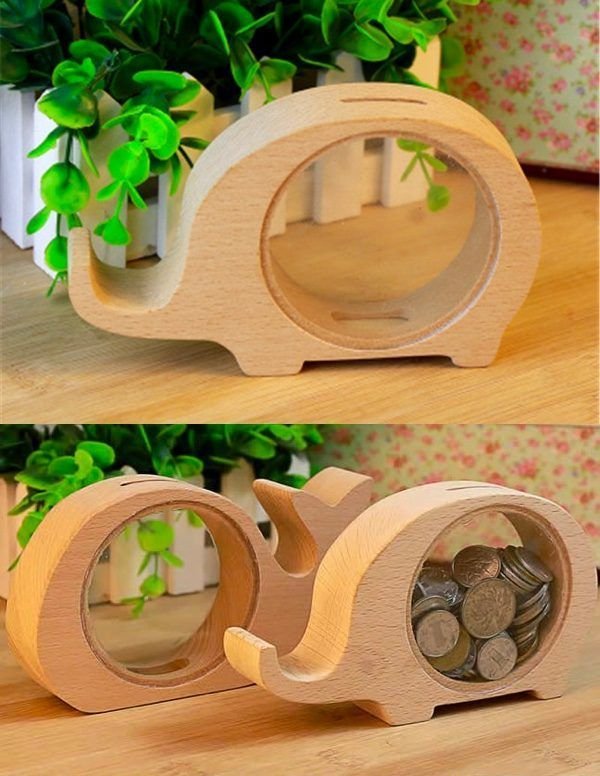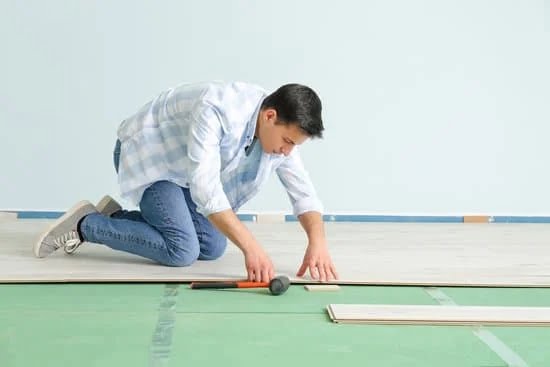Woodworking wood carving tools are essential for any craftsman, whether they are just starting or have years of experience in the craft. Knowing the names and functions of these tools is crucial to effectively creating intricate and beautiful woodwork. From chisels to mallets, understanding the purpose of each tool ensures precision and quality in woodworking projects. For beginners, familiarizing themselves with the woodworking wood carving tools names lays a strong foundation for skill development and mastery of the craft.
Both beginners and experienced craftsmen rely on a variety of hand tools in woodworking and wood carving. Chisels, gouges, knives, and mallets are among the essential hand tools that form the backbone of any woodworking project.
Learning the names and capabilities of these hand tools allows craftsmen to choose the right tool for each task, leading to more efficient work and stunning results. With proper knowledge of these tools, artisans can unleash their creativity and bring their visions to life through wood carving.
In addition to hand tools, power tools play a significant role in modern woodworking practices. Tools like rotary tools, power carvers, and electric chisels offer efficiency and precision in shaping wood pieces. Understanding the names and purposes of these power tools is vital for maximizing their potential and achieving professional results in woodworking. By embracing both traditional hand tools and innovative power tools, craftsmen can elevate their skills and create intricate wood carvings with ease.
Essential Hand Tools
Woodworking and wood carving rely heavily on the use of essential hand tools that play a crucial role in shaping, carving, and crafting wooden creations. For both beginners and experienced craftsmen, familiarizing oneself with the names and functions of common hand tools is essential for mastering the art of woodworking. Below are some of the most commonly used hand tools in woodworking and wood carving along with their functions:
- Chisels: Chisels are versatile tools used for cutting, shaping, and carving wood. They come in various shapes and sizes, including beveled edge chisels, gouges, and fishtail chisels.
- Gouges: Gouges have curved cutting edges used for hollowing out shapes or creating decorative details in wood. They are available in different sweep sizes to achieve varying depths and curves.
- Knives: Woodworking knives, such as chip carving knives or whittling knives, are used for delicate cuts, intricate designs, and fine detailing in wood carving projects.
- Mallets: Mallets are essential for striking chisels or gouges to make precise cuts without damaging the tools. They come in different weights and materials like wooden mallets or rubber mallets.
Understanding the names and functions of these essential hand tools will not only enhance your woodworking skills but also help you achieve greater precision and control when working with wood. Experimenting with different types of chisels, gouges, knives, and mallets can unlock endless possibilities for creating unique and intricate wood carvings with finesse.
Whether you are a seasoned woodworker or just starting on your woodworking journey, having a good grasp of the names of hand tools like chisels, gouges, knives, and mallets is fundamental to honing your craftsmanship. These tools serve as extensions of your creativity and skillset when working with wood, allowing you to bring your projects to life with precision and artistry.
So next time you embark on a woodworking project or delve into wood carving artistry, remember the importance of knowing your woodworking wood carving tools by name to elevate your craft to new heights.
Power Tools
Rotary tools, also known as Dremel tools, are versatile handheld devices that can be used for cutting, grinding, sanding, polishing, and carving. With various attachments available such as cutting wheels, sanding drums, and engraving bits, rotary tools offer craftsmen a wide range of possibilities in woodworking projects. Power carvers are motorized handpieces designed specifically for carving intricate details and patterns into wood. They allow for precise control and speed adjustments to create delicate designs with ease.
Electric chisels are power-operated versions of traditional chisels used for shaping wood by removing material through a hammering action or rotating motion. These tools come in various sizes and styles to suit different project needs. By understanding how to use these power tools effectively and safely, craftsmen can enhance their woodworking skills while saving time and effort in their projects.
Whether you are a beginner looking to explore new techniques or an experienced craftsman wanting to speed up your workflow, incorporating power tools like rotary tools, power carvers, and electric chisels into your woodworking arsenal can elevate your craft to the next level. Familiarizing yourself with the names and functions of these essential power tools is key to unlocking their full potential in creating exquisite woodwork masterpieces.
Specialized Tools
Specialized woodworking tools play a crucial role in enhancing the precision and efficiency of woodworking and wood carving projects. One such tool is the drawknife, which has a blade that can be used to shave off thin layers of wood. This tool is commonly utilized for shaping irregularly shaped pieces of wood or creating curved surfaces with ease. The drawknife’s versatility makes it a valuable asset in the workshop for both beginner and experienced woodworkers.
Another specialized woodworking tool that stands out is the spokeshave, which is designed for shaping rounded or curved surfaces on wood. The spokeshave features a cutting blade that is held in place by two handles, allowing craftsmen to control the depth and angle of cuts with precision.
This tool is particularly handy for crafting chair legs, spokes, or any other rounded wooden component that requires meticulous shaping. The spokeshave’s ability to create smooth contours makes it an essential part of any woodworking toolkit.
Additionally, scorps are specialized woodworking tools that are perfect for hollowing out concave shapes or smoothing uneven surfaces on wooden pieces. These tools feature a curved blade attached to handles, enabling woodworkers to remove material quickly while maintaining control over the depth and curvature of their cuts.
Scorps are commonly used for creating aesthetic details on furniture pieces, sculpting intricate designs, or carving bowls with intricate patterns. Understanding the names and functions of specialized woodworking tools like drawknives, spokeshaves, and scorps can greatly expand one’s capabilities in the craft of woodworking and wood carving.
Safety Equipment
Safety in woodworking and wood carving is of paramount importance, and having the right safety equipment can prevent accidents and injuries. One of the essential safety tools is goggles, which protect your eyes from wood chips, debris, and dust that can be produced while carving or cutting wood. Safety goggles should have a snug fit to prevent any particles from entering your eyes during work.
Another crucial piece of safety equipment is a mask, particularly a respirator mask that filters out dust and harmful particles to protect your lungs from inhalation hazards. Woodworking often involves activities that create fine sawdust or airborne particles that can be hazardous when breathed in over time. Choosing the appropriate respirator mask for woodworking based on filtration efficiency is vital for maintaining good respiratory health.
Additionally, gloves are necessary to protect your hands from sharp edges, splinters, or accidental cuts while handling woodworking tools. When selecting gloves for woodworking, it’s important to choose ones that provide dexterity and grip while also offering protection against potential injuries. Finding the right balance between protection and flexibility will ensure safe operations in woodworking and wood carving projects.
| Safety Equipment | Importance |
|---|---|
| Goggles | Protects eyes from debris |
| Masks | Filters out dust for lung protection |
| Gloves | Protects hands from cuts and splinters |
Maintenance Tools
Maintenance and sharpening tools are essential for keeping woodworking wood carving tools in optimal condition for efficient use. The proper maintenance of these tools ensures that they remain sharp, safe, and effective for creating intricate wood carvings and woodworking projects. Among the key maintenance tools are sharpening stones, honing guides, and strops, each serving a specific purpose in keeping cutting edges sharp and precise.
Sharpening stones come in various grits and materials like diamond, ceramic, or natural stone. These stones are used to remove material from the edge of woodworking tools to create a sharp cutting surface. Honing guides assist in maintaining consistent bevel angles while sharpening chisels, gouges, or blades on sharpening stones. By securing the tool in place at the correct angle, honing guides ensure uniform sharpening across the cutting edge.
Strops are an important tool for refining and polishing the cutting edge of woodworking tools after sharpening on a stone. Typically made of leather or fabric impregnated with abrasive compounds like honing paste or rouge, strops help achieve a razor-sharp edge on carving knives, chisels, or gouges. Proper use of maintenance tools not only enhances the performance of woodworking wood carving tools but also prolongs their lifespan for continued use in crafting wooden masterpieces.
| Maintenance Tools | Function |
|---|---|
| Sharpening Stones | Remove material from the edge to create a sharp cutting surface |
| Honing Guides | Maintain consistent bevel angles while sharpening |
| Strops | Refine and polish the cutting edge after sharpening on a stone |
Alternative Tools
When it comes to woodworking and wood carving, there is a wide range of tools available beyond the traditional chisels and gouges. These alternative tools can offer unique capabilities and versatility for craftsmen looking to expand their skillset. Japanese pull saws, rasps, and angle grinders are just a few examples of unconventional tools that can be valuable additions to any workspace.
Japanese Pull Saws
Japanese pull saws are known for their thin blades with teeth designed to cut on the pull stroke rather than the push stroke like Western saws. This design allows for greater precision and control when making intricate cuts in wood. The names of different types of Japanese pull saws include dozuki, ryoba, and kataba, each with its own specific use in woodworking. These saws are ideal for fine detail work and delicate joinery.
Rasps
Rasps are rough files used for shaping and smoothing wood surfaces by removing small amounts of material. They come in various shapes and sizes, with names like flat rasp, half-round rasp, and round rasp depending on their profile. Rasps are particularly useful for sculpting curved or irregular shapes that may be challenging to achieve with traditional cutting tools. Woodworkers often use rasps in combination with other tools to refine details and add texture to their projects.
Angle Grinders
Angle grinders are power tools equipped with abrasive discs that rotate at high speeds to cut, grind, or polish materials such as metal or stone. While not commonly associated with woodworking, angle grinders can be adapted for use in wood carving by attaching carving discs or sanding attachments.
Names of specialized accessories for angle grinders include flap discs, carving chainsaw wheels, and carbide burrs, which enable woodworkers to quickly remove material or shape wood with precision. When using angle grinders for wood carving, safety precautions must be taken due to their powerful nature.
Tool Storage and Organization
In conclusion, understanding the names and functions of woodworking wood carving tools is crucial for both beginners and experienced craftsmen in the field. From essential hand tools like chisels and gouges to specialized tools such as drawknives and spokeshaves, each tool serves a unique purpose in the craft of woodworking. Power tools like rotary tools and electric chisels offer efficiency and precision in wood carving, while safety equipment like goggles and masks ensure protection while working with these tools.
Moreover, proper maintenance with tools like sharpening stones and honing guides is essential for keeping woodworking tools in optimal condition for long-lasting use. Exploring alternative tools like Japanese pull saws or angle grinders can provide new avenues for creativity and innovation in woodworking projects. When it comes to tool storage and organization, utilizing tool chests, wall racks, or tool cabinets can help keep your workspace tidy and your tools easily accessible for your next project.
Overall, whether you’re just starting out or have years of experience in woodworking, familiarizing yourself with the names of woodworking wood carving tools is a fundamental aspect of mastering the craft. By knowing the names, functions, and proper maintenance of these tools, you can enhance your skills, improve efficiency in your work, and create beautifully crafted creations with confidence.
Frequently Asked Questions
What Are Wood Carving Tools Called?
Wood carving tools are typically referred to as chisels, gouges, and knives. These tools come in various shapes and sizes, each serving a specific purpose in the wood carving process.
What Tools Do You Need for Wood Carving?
The essential tools needed for wood carving include chisels, gouges, mallets, knives, sharpening stones, and a workbench or carving clamp. Each tool plays a crucial role in shaping and detailing the wood according to the carver’s design.
What Is a Wood Carving Knife Called?
A wood carving knife is commonly known simply as a “carving knife.” This specialized knife has a sharp blade with a pointed tip, allowing for precise cutting and shaping of wood during the carving process. Carving knives come in different sizes and blade shapes depending on the desired outcome of the carving project.

Hi everyone! I’m a woodworker and blogger, and this is my woodworking blog. In my blog, I share tips and tricks for woodworkers of all skill levels, as well as project ideas that you can try yourself.





